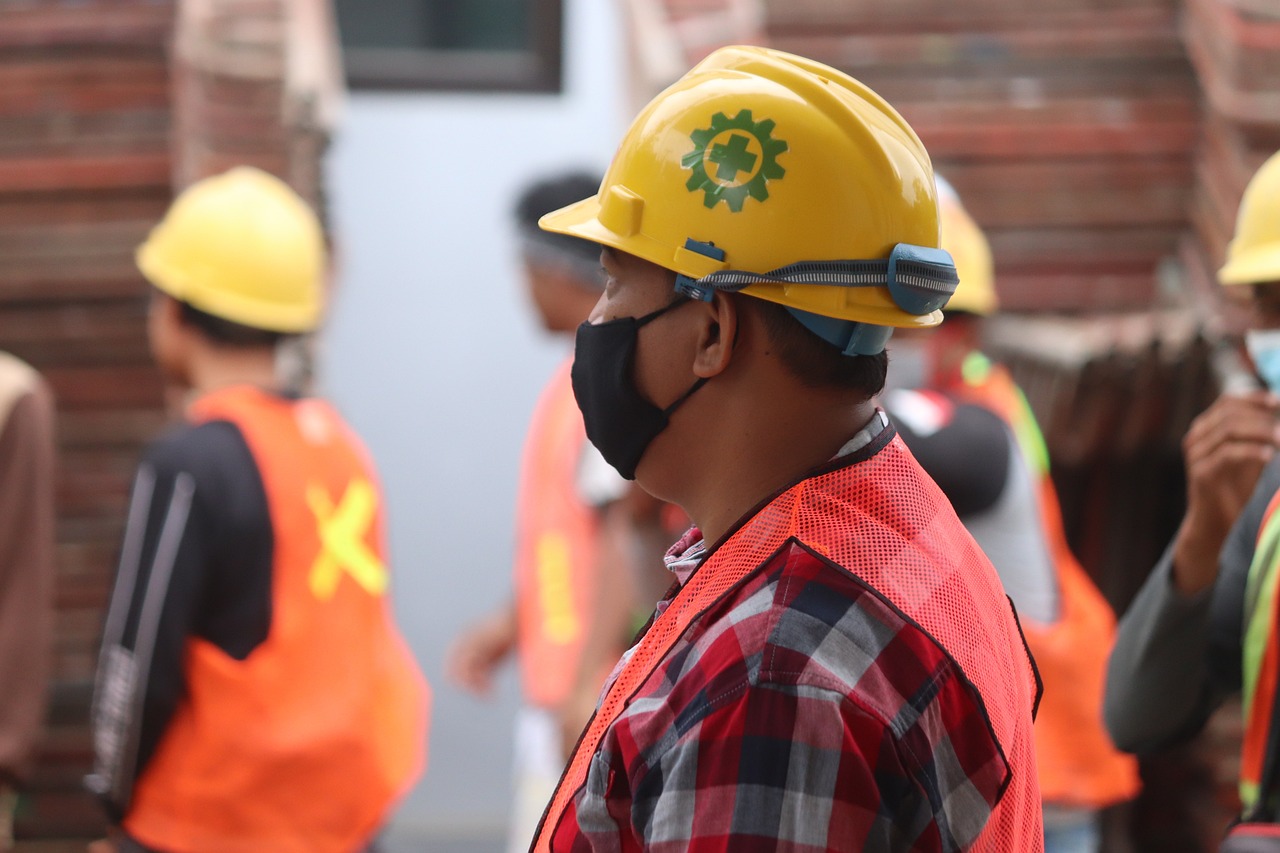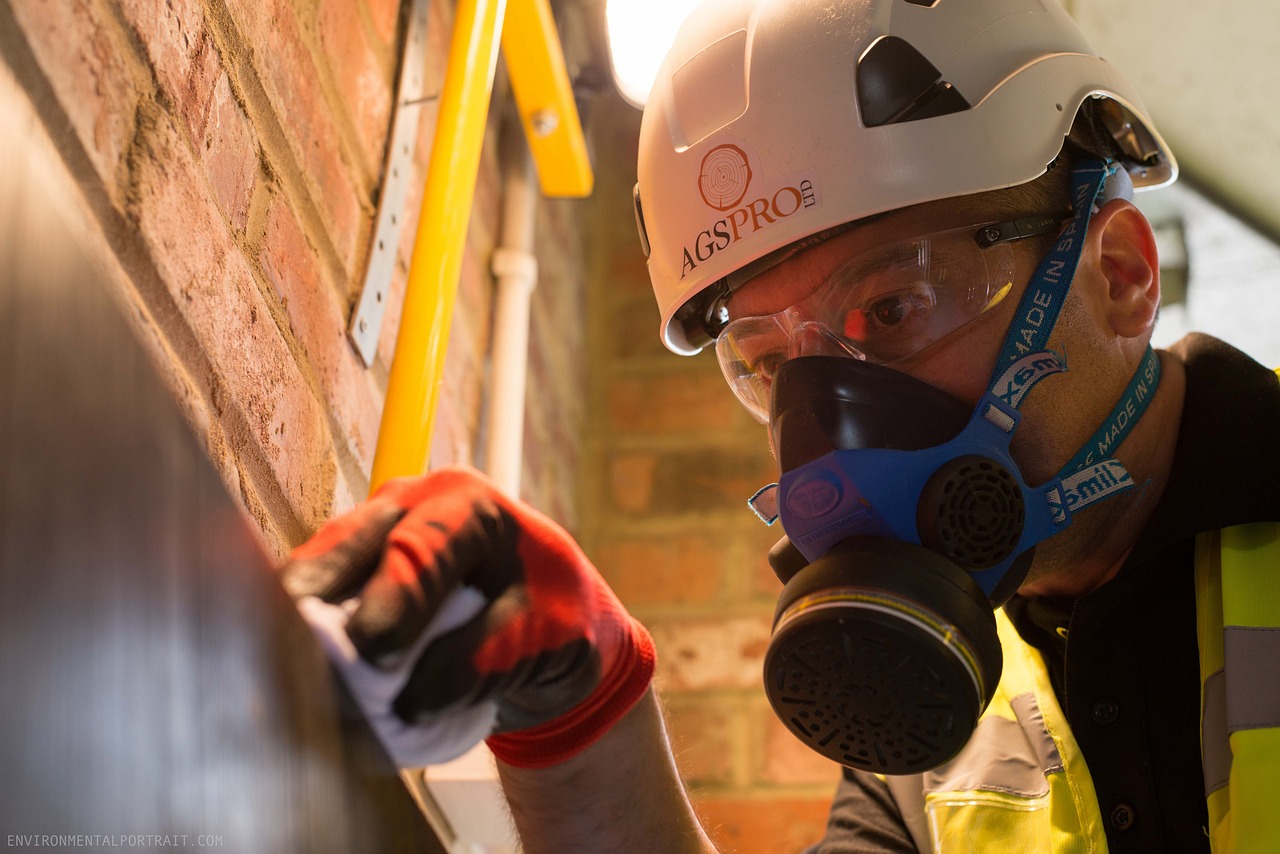The Influence of Human Behavior: A New View on Safety
In today's fast-paced world, safety is more than just a set of protocols; it’s a dynamic interplay of human behavior and organizational practices. When we think about safety, we often envision hard hats, safety goggles, and compliance checklists. But what if I told you that the real game-changer lies in understanding the psychological underpinnings of behavior? By focusing on how people think and act in various situations, organizations can develop strategies that not only meet safety standards but also resonate with the workforce on a personal level.
Imagine a workplace where safety isn’t just a checkbox on a list but a core value that everyone embraces. This transformation requires a shift in perspective—an acknowledgment that human behavior is the driving force behind safety measures. Instead of viewing safety as a series of imposed rules, we should see it as a culture that thrives on engagement, accountability, and proactive participation. By fostering an environment where employees feel empowered to take charge of their safety and the safety of others, organizations can significantly reduce risks and enhance overall well-being.
To achieve this, it's crucial to delve into the psychology of safety. What motivates individuals to follow safety protocols? What barriers do they face? Understanding these questions helps in crafting effective safety measures that resonate with employees. For instance, if workers feel that their voices are heard and their contributions valued, they are more likely to engage in safe practices. This highlights the need for a behavioral approach to safety—one that prioritizes human factors and creates a culture of continuous improvement.
In this article, we will explore the various aspects of human behavior and its influence on safety, emphasizing the necessity of a behavioral approach in safety protocols. We will discuss the psychology of safety, the implementation of behavioral safety programs, and the critical role of leadership in shaping a safety culture. So, buckle up as we dive into the fascinating world of human behavior and its profound impact on safety!

The Psychology of Safety
When we talk about safety, it’s easy to think about regulations, equipment, and protocols. But what about the human mind? Understanding the psychological factors that influence safety behavior is crucial for organizations aiming to cultivate a strong safety culture. After all, the way people think and feel about safety can significantly impact how they act in potentially hazardous situations.
At the heart of safety psychology lies the understanding that perception plays a pivotal role. Employees may perceive risks differently based on their past experiences, training, and even their emotional state. For instance, someone who has experienced a workplace accident may approach safety with heightened vigilance, while another person might underestimate risks due to a lack of firsthand experience. This disparity can lead to inconsistent safety practices within a team, making it essential for organizations to address these differences.
Moreover, the concept of cognitive biases cannot be ignored. Many individuals have a tendency to believe that “it won’t happen to me.” This optimistic bias can lead to complacency, where employees might skip safety measures because they feel invulnerable. To combat this, organizations can implement strategies to raise awareness about the realities of workplace hazards, perhaps through storytelling or sharing real-life case studies that resonate with employees.
Another critical aspect is the emotional connection employees have with safety. When workers feel that their safety and well-being are genuinely valued, they are more likely to engage in safe practices. This can be fostered through open communication, where employees feel comfortable voicing concerns without fear of retribution. Creating a culture of trust and respect can significantly enhance the psychological safety of the workplace, allowing for a more proactive approach to safety.
To sum up, understanding the psychology of safety is not just about knowing what to do; it's about understanding why people do what they do. By addressing psychological factors such as perception, cognitive biases, and emotional connections, organizations can develop better strategies that resonate with their employees, ultimately leading to a safer work environment.
- What is the role of psychology in workplace safety? Psychology plays a crucial role in understanding how employees perceive risks and make decisions regarding safety. By addressing these psychological factors, organizations can enhance their safety protocols.
- How can organizations change employee perceptions about safety? Organizations can change perceptions by providing training, sharing real-life stories, and fostering open communication about safety concerns.
- Why is emotional connection important for safety? When employees feel valued and safe, they are more likely to engage in safe behaviors and adhere to safety protocols.

Behavioral safety programs are not just a trend; they represent a fundamental shift in how organizations approach safety. Instead of relying solely on rules and regulations, these programs emphasize the importance of individual behaviors and attitudes in creating a safer workplace. Imagine a world where safety isn’t just about compliance but about cultivating a genuine concern for one another's well-being. This is the essence of behavioral safety. By focusing on changing specific behaviors, organizations can significantly reduce the number of accidents and incidents that occur on the job.
One of the most significant advantages of implementing behavioral safety programs is their ability to foster a proactive safety culture. In such an environment, employees don’t just follow safety protocols because they have to; they do so because they want to. This shift in mindset can be likened to a team working together to win a championship. Each member understands their role and contributes to the overall success, creating a sense of camaraderie and shared responsibility. In this way, behavioral safety programs can transform the perception of safety from a chore into a collective mission.
But how do organizations go about implementing these programs effectively? First, they need to engage employees at all levels. This engagement can be achieved through various methods, including training sessions, workshops, and open forums where employees can discuss safety concerns and share ideas. Additionally, organizations should establish a system for observation and feedback. This involves monitoring behaviors and providing constructive feedback to reinforce safe practices. When employees see that their actions are being noticed and appreciated, they are more likely to continue those behaviors.
Furthermore, a key component of behavioral safety programs is the concept of reinforcement. This can take many forms, from verbal praise to tangible rewards for safe behavior. By recognizing and rewarding safe actions, organizations create a positive feedback loop that encourages individuals to prioritize safety in their daily routines. It’s essential to remember that everyone responds differently to reinforcement, so a one-size-fits-all approach may not be effective. Tailoring the reinforcement strategies to meet the diverse needs of employees can significantly enhance the program's success.
To illustrate the effectiveness of behavioral safety programs, let’s take a look at a hypothetical case study. Company X implemented a behavioral safety program focusing on reducing slips, trips, and falls. They began by conducting a thorough analysis of past incidents and identified key behaviors contributing to these accidents. Through targeted training and regular safety observations, they encouraged employees to adopt safer practices, such as wearing appropriate footwear and keeping walkways clear. Over six months, the company saw a 40% reduction in incidents related to slips, trips, and falls, showcasing the power of behavioral safety.
In summary, behavioral safety programs are a game-changer for organizations looking to enhance their safety measures. By focusing on individual behaviors, fostering a proactive culture, and implementing effective observation and reinforcement strategies, companies can create a safer and more engaged workforce. This approach not only reduces accidents but also builds a community where safety is a shared value.

When it comes to enhancing safety in the workplace, understanding the key components of behavioral safety is essential. These components serve as the foundation for creating a more proactive safety culture that not only reduces risks but also encourages employees to engage in safe practices consistently. At the heart of behavioral safety are three crucial elements: observation, feedback, and reinforcement.
Observation is the first step in behavioral safety programs. It involves systematically watching and recording employee behaviors in their work environments. This is not about micromanaging but rather about understanding how employees interact with their surroundings. By observing behaviors, organizations can identify unsafe practices and areas that require improvement. For instance, if a safety officer notices that employees are frequently bypassing safety equipment, this observation can lead to targeted interventions aimed at correcting these behaviors.
Next comes feedback, which is a vital component of any behavioral safety program. Providing timely and constructive feedback helps employees understand the consequences of their actions—both positive and negative. When feedback is delivered effectively, it can motivate employees to adopt safer practices. For example, if an employee is praised for using safety gear correctly, they are more likely to continue this behavior. On the flip side, if they receive feedback about unsafe practices, it creates an opportunity for discussion and improvement. Feedback should be specific, actionable, and delivered in a supportive manner to foster a culture of open communication.
The third component, reinforcement, ties everything together. Positive reinforcement can significantly influence behavior by rewarding safe practices. This could be in the form of recognition programs, bonuses, or even simple verbal praise. When employees see that their safe behaviors are acknowledged and rewarded, it creates a ripple effect throughout the organization. They become more likely to share their commitment to safety with their peers, enhancing the overall safety culture.
In summary, the key components of behavioral safety—observation, feedback, and reinforcement—work together to create a robust framework for improving workplace safety. By focusing on these elements, organizations can not only reduce accidents but also cultivate an environment where safety is a shared responsibility among all employees. It’s about building a culture that values safety at its core, where everyone feels empowered to contribute to a safer work environment.
- What is behavioral safety? Behavioral safety is an approach that focuses on identifying and changing unsafe behaviors in the workplace to enhance safety and reduce accidents.
- Why is observation important in behavioral safety? Observation helps identify unsafe practices and provides data for targeted interventions, leading to improved safety outcomes.
- How can feedback improve safety culture? Constructive feedback encourages employees to engage in safe practices and fosters open communication about safety concerns.
- What role does reinforcement play in promoting safe behavior? Reinforcement, through rewards and recognition, motivates employees to adopt and maintain safe behaviors consistently.

When it comes to ensuring safety in any workplace, training is not just a box to check; it’s a vital lifeline. Imagine navigating a dense forest without a map or compass—this is how employees feel when they lack proper training. They may know their jobs, but without the right safety protocols, they are essentially wandering in the dark. Effective training programs equip employees with the knowledge and skills necessary to recognize potential hazards and engage in safe behaviors. This proactive approach can be the difference between a safe work environment and a catastrophic incident.
Training should be comprehensive and tailored to the specific needs of the organization and its employees. It’s essential to cover various aspects, including:
- Understanding workplace hazards
- Proper use of personal protective equipment (PPE)
- Emergency response procedures
- Reporting unsafe conditions
Moreover, the effectiveness of training goes beyond just the initial sessions. Continuous training and refresher courses are crucial for keeping safety at the forefront of employees' minds. Think of it as regular maintenance for a vehicle; without it, performance declines, and risks increase. Organizations should implement ongoing training programs that not only reinforce existing knowledge but also introduce new safety practices and technologies as they emerge.
Another key element is the involvement of employees in the training process. When workers are engaged in their learning, they are more likely to internalize safety practices. Interactive methods like hands-on demonstrations, role-playing scenarios, and group discussions can enhance this engagement. By making training a collaborative effort, organizations foster a culture where safety is a shared responsibility.
Finally, measuring the effectiveness of training is essential. Organizations should establish metrics to evaluate whether training is translating into safer behaviors on the job. This could include tracking incident reports, conducting safety audits, or gathering feedback through employee surveys. By analyzing this data, organizations can make informed adjustments to their training programs, ensuring they remain relevant and effective.
In conclusion, training is the backbone of any successful safety initiative. It empowers employees, fosters a culture of safety, and ultimately leads to a significant reduction in workplace accidents. By investing in robust training programs, organizations not only protect their employees but also enhance their overall productivity and morale.
- What is the primary goal of safety training? The primary goal is to equip employees with the skills and knowledge necessary to recognize hazards and engage in safe practices.
- How often should safety training be conducted? Safety training should be ongoing, with regular refreshers to ensure employees stay updated on best practices and new protocols.
- What methods are most effective for safety training? Interactive methods such as hands-on demonstrations, role-playing, and group discussions tend to be the most effective as they engage employees actively.
- How can organizations measure the effectiveness of their training? Organizations can track incident reports, conduct safety audits, and gather feedback through employee surveys to measure the effectiveness of their training programs.

When it comes to ensuring a safe working environment, measuring success in behavioral safety is not just a box to check; it's a vital component of any effective safety program. Organizations must establish clear metrics that allow them to evaluate the effectiveness of their initiatives. But what exactly should these metrics look like? Well, they can vary widely based on the specific goals of the safety program, the industry in which the organization operates, and the unique challenges it faces.
One of the most effective ways to measure success is through the use of leading and lagging indicators. Leading indicators are proactive measures, such as the number of safety training sessions conducted or the frequency of safety audits performed. These metrics help organizations anticipate potential issues before they escalate into accidents. On the other hand, lagging indicators, like the number of incidents reported or lost-time injuries, provide insight into how well the safety measures have worked in the past. By analyzing both types of indicators, organizations can gain a comprehensive understanding of their safety performance.
Additionally, employee feedback plays a crucial role in measuring success. Regular surveys and feedback sessions can help gauge employees' perceptions of safety in their work environment. Are they aware of the safety protocols? Do they feel empowered to report unsafe conditions? Gathering this information can provide valuable insights into the effectiveness of the behavioral safety program and highlight areas that may need improvement.
Another essential aspect of measuring success is the establishment of behavioral observation programs. These programs involve observing employees in their daily tasks to identify safe and unsafe behaviors. By collecting data on these behaviors, organizations can pinpoint specific areas where training or intervention is needed. This not only helps in reducing accidents but also fosters a culture of continuous improvement.
To illustrate the importance of measuring success in behavioral safety, consider the following table that outlines potential metrics and their significance:
| Metric | Description | Type |
|---|---|---|
| Number of Safety Training Sessions | Tracks how many training sessions have been conducted over a period. | Leading |
| Employee Safety Surveys | Measures employee perceptions and attitudes towards safety. | Leading |
| Incident Rate | Calculates the number of incidents per a specific number of hours worked. | Lagging |
| Days Since Last Incident | Tracks the number of days since the last recorded incident. | Lagging |
In conclusion, measuring success in behavioral safety is an ongoing process that requires dedication, attention to detail, and a willingness to adapt. By focusing on both leading and lagging indicators, gathering employee feedback, and implementing behavioral observation programs, organizations can create a robust framework for evaluating their safety initiatives. This not only helps in reducing risks but also cultivates a culture where safety is prioritized, ultimately leading to a healthier, more productive workplace.
Q: Why is it important to measure success in behavioral safety?
A: Measuring success helps organizations identify areas for improvement, track progress over time, and ultimately reduce accidents and injuries.
Q: What are leading and lagging indicators?
A: Leading indicators are proactive measures that predict potential safety issues, while lagging indicators are reactive measures that reflect past safety performance.
Q: How can employee feedback enhance safety programs?
A: Employee feedback provides insights into their perceptions of safety, helping organizations to adjust their programs and ensure that safety protocols are understood and followed.
Q: What role do behavioral observation programs play?
A: These programs allow organizations to observe and analyze employee behaviors in real-time, identifying safe and unsafe practices that need to be addressed.

Change is often met with resistance, especially in the context of safety protocols within organizations. Employees may feel uncomfortable or skeptical about new practices, fearing that these changes could disrupt their routine or even add to their workload. It's essential to recognize that this resistance is a natural human reaction, much like a reflex to protect oneself from perceived threats. So, how do we turn this resistance into acceptance and enthusiasm for a safer workplace?
First, it’s vital to engage employees from the outset. When individuals feel included in the decision-making process, they are more likely to embrace change. This could involve holding open forums where employees can voice their concerns and suggestions about proposed safety measures. By actively listening and incorporating their feedback, organizations can foster a sense of ownership and responsibility towards safety initiatives. Remember, it’s not just about telling employees what to do; it’s about inviting them to be part of the solution.
Another effective strategy is to communicate the benefits of the new safety measures clearly. Employees need to understand how these changes will not only protect them but also enhance their overall work environment. For instance, if a new safety protocol reduces the risk of accidents, it also minimizes the potential for workplace injuries, which can lead to less stress and more job satisfaction. Highlighting these positive outcomes can transform skepticism into support.
Training plays a crucial role in easing the transition. By providing comprehensive training sessions, organizations can equip employees with the knowledge and skills necessary to adapt to new safety practices. This training should be interactive and engaging, allowing employees to practice the new behaviors in a safe environment. When individuals feel competent and confident in their ability to implement changes, they are less likely to resist.
Lastly, it’s important to celebrate small victories. Recognizing and rewarding employees who embrace new safety measures can create a ripple effect throughout the organization. A simple acknowledgment during a team meeting or a small incentive can go a long way in motivating others to follow suit. It’s like planting seeds of change; with the right care and attention, they will grow into a culture of safety.
In summary, overcoming resistance to change requires a combination of engagement, clear communication, effective training, and recognition of achievements. By addressing the human elements of change, organizations can cultivate a positive safety culture that not only meets regulatory requirements but also genuinely protects and empowers employees.
- What are the common reasons for resistance to change? Resistance often stems from fear of the unknown, lack of understanding, or perceived threats to job security.
- How can leaders help reduce resistance? Leaders can minimize resistance by involving employees in the change process, communicating transparently, and providing adequate training.
- What role does communication play in overcoming resistance? Effective communication ensures that employees understand the reasons behind changes and how they will benefit from them.
- Why is celebrating small victories important? Celebrating small wins helps to build momentum and encourages others to embrace the changes being implemented.

The influence of leadership on safety culture cannot be overstated. In any organization, leaders set the tone for how safety is perceived and prioritized. When leaders actively promote a culture of safety, it resonates throughout the entire organization, creating an environment where employees feel empowered and responsible for their own safety and that of their colleagues. Imagine a ship at sea: if the captain is vigilant and committed to navigating safely, the crew is more likely to follow suit. Conversely, if the captain is negligent, the crew may feel it’s acceptable to disregard safety protocols.
One of the most effective ways leaders can foster a strong safety culture is by leading by example. When leaders consistently demonstrate safe behaviors, such as wearing personal protective equipment (PPE) and adhering to safety protocols, they send a powerful message. Employees are more likely to mimic the behaviors of their leaders; it’s human nature. This creates a ripple effect, where safety becomes a shared responsibility rather than just a set of rules to follow.
Moreover, effective communication plays a pivotal role in shaping the safety culture within an organization. Leaders should engage in open discussions about safety, encouraging employees to voice their concerns and suggestions. This not only helps identify potential hazards but also fosters a sense of belonging and accountability among team members. To illustrate this point, consider the following communication strategies:
- Regular Safety Meetings: Holding frequent meetings focused on safety allows leaders to reinforce the importance of safety practices while giving employees a platform to discuss their experiences.
- Feedback Mechanisms: Implementing systems for providing feedback on safety practices ensures that employees feel heard and valued, which can boost morale and compliance.
- Clear Messaging: Leaders should communicate safety expectations clearly and consistently, ensuring that everyone understands their role in maintaining a safe work environment.
Additionally, it’s essential for leaders to recognize and reward safe behaviors. Acknowledging employees who prioritize safety not only reinforces positive behavior but also motivates others to follow suit. For example, a simple recognition program can go a long way in making safety a core value of the organization. By celebrating safety milestones and achievements, leaders cultivate a culture where safety is seen as an integral part of the organizational identity.
In conclusion, the impact of leadership on safety culture is profound and far-reaching. Leaders who prioritize safety through their actions, communication, and recognition efforts can create a workplace where safety is woven into the fabric of the organization. This not only enhances the well-being of employees but also contributes to the overall success and sustainability of the organization. After all, a safe workplace is a productive workplace.
- How can leaders effectively communicate safety protocols?
Leaders can communicate safety protocols through regular meetings, training sessions, and clear signage around the workplace. Consistency and clarity are key. - What role does employee feedback play in safety culture?
Employee feedback is crucial as it helps identify potential hazards and improves safety measures. It fosters a sense of ownership among employees regarding their safety. - How can leaders encourage a culture of safety?
By leading by example, recognizing safe behaviors, and maintaining open communication, leaders can effectively encourage a culture where safety is prioritized.

In any organization, the phrase "lead by example" isn't just a catchy saying; it’s a fundamental principle that can profoundly influence safety culture. When leaders actively demonstrate safe behaviors, they set a powerful precedent for their teams. Imagine a captain steering a ship through turbulent waters; if the captain is calm and focused, the crew is more likely to remain composed and follow suit. This analogy holds true in the workplace, where the actions of leaders can either inspire or undermine safety practices.
Leaders who prioritize safety in their daily routines send a clear message that safety is everyone's responsibility. For instance, if a manager consistently wears personal protective equipment (PPE) and follows safety protocols, employees are more likely to adopt the same behaviors. It’s about creating a ripple effect; when leaders take safety seriously, it encourages a collective commitment among all employees. This dynamic can be visualized in a domino effect where one safe behavior leads to another, ultimately fostering a culture where safety is ingrained in every action.
Moreover, the transparency with which leaders communicate safety practices plays a crucial role in shaping perceptions. When leaders openly discuss safety issues, share near-miss incidents, and celebrate safe behaviors, it cultivates an environment of trust. Employees feel empowered to voice their concerns and contribute to safety discussions, knowing that their input is valued. This open dialogue is essential for identifying potential hazards and developing effective solutions.
However, it's not just about what leaders say; it’s also about how they behave. If a leader is caught ignoring safety protocols or taking shortcuts, it can lead to a significant erosion of trust. Employees may begin to think, "If they don’t care about safety, why should I?" This mindset can be detrimental, leading to increased risks and accidents. Therefore, leaders must be vigilant in their actions and consistent in their messaging. They should actively participate in safety training sessions, conduct safety audits, and engage in discussions about safety improvements.
To effectively lead by example, leaders can implement the following strategies:
- Be Visible: Regularly walk through the workplace, observing and engaging with employees about safety practices.
- Participate in Training: Join training sessions to show commitment and to learn alongside employees.
- Recognize Safe Behaviors: Acknowledge and reward employees who demonstrate exemplary safety practices.
- Share Stories: Use real-life examples to illustrate the importance of safety and the consequences of neglecting it.
In conclusion, leading by example is not just a leadership tactic; it’s a vital component of a successful safety culture. By embodying safe practices, communicating openly, and engaging with employees, leaders can inspire a culture where safety is prioritized and valued. This proactive approach not only minimizes risks but also enhances overall morale and productivity within the organization.
Q: Why is leading by example important for safety culture?
A: Leading by example is crucial because it sets a standard for employees to follow. When leaders prioritize safety, it fosters a culture where everyone feels responsible for maintaining safety protocols.
Q: How can leaders effectively communicate safety expectations?
A: Leaders can communicate safety expectations by being transparent, sharing relevant information regularly, and encouraging open discussions about safety concerns.
Q: What are some common mistakes leaders make regarding safety?
A: Common mistakes include ignoring safety protocols themselves, failing to recognize safe behaviors, and not engaging employees in safety discussions.

Effective communication is the backbone of any successful safety initiative. When it comes to ensuring a safe working environment, it’s not just about having the right protocols in place; it’s about how those protocols are communicated to everyone involved. Imagine trying to build a house without a blueprint—chaos would ensue! Similarly, without clear communication, safety measures can easily become misunderstood or ignored. So, how can organizations enhance their communication strategies to promote safety?
First and foremost, clarity is key. Safety messages should be simple, direct, and devoid of jargon. Employees need to understand exactly what is expected of them. For instance, instead of saying, “Ensure compliance with safety regulations,” a clearer message would be, “Always wear your safety goggles when in the lab.” This kind of straightforward language eliminates confusion and empowers employees to take action.
Another essential aspect is consistency. Safety information should be communicated regularly and through multiple channels. Whether it’s through emails, meetings, or bulletin boards, repeated messaging helps engrain safety practices into the organizational culture. A table could even be used to outline the various communication channels and their respective frequencies:
| Communication Channel | Frequency |
|---|---|
| Email Updates | Weekly |
| Safety Meetings | Monthly |
| Bulletin Board Announcements | Ongoing |
Moreover, encouraging an open dialogue about safety is crucial. Employees should feel comfortable voicing their concerns or suggestions without fear of retribution. This can be achieved through regular feedback sessions or anonymous suggestion boxes. When employees see that their input is valued, they are more likely to engage with safety protocols actively.
In addition, visual aids can enhance understanding and retention of safety information. Infographics, posters, and videos can break down complex safety procedures into digestible formats. For example, a short video demonstrating the proper use of safety equipment can be far more effective than a written manual. This not only captures attention but also caters to various learning styles within the workforce.
Finally, it’s important to recognize and reward safe behavior. When employees observe that safety practices are recognized and appreciated, they are more likely to adopt them. This can be as simple as a shout-out in a meeting or a more formal recognition program. By celebrating safety, organizations reinforce the idea that safety is a shared responsibility.
In conclusion, effective communication strategies are vital in fostering a culture of safety. By prioritizing clarity, consistency, open dialogue, visual aids, and recognition, organizations can significantly enhance their safety initiatives. Remember, safety is not just a set of rules; it’s a mindset that needs to be nurtured through effective communication.
- What are some common barriers to effective safety communication? Barriers can include language differences, lack of engagement from employees, and insufficient training on safety protocols.
- How can organizations measure the effectiveness of their communication strategies? Organizations can conduct surveys, track incident reports, and monitor employee feedback to assess the effectiveness of their communication.
- Why is feedback important in safety communication? Feedback allows organizations to refine their safety messages and ensures that employees feel heard and valued, leading to greater compliance with safety practices.
Frequently Asked Questions
- What is the importance of understanding human behavior in safety protocols?
Understanding human behavior is crucial because it allows organizations to tailor safety protocols that resonate with employees. When safety measures align with how people think and act, they become more effective. It's like trying to fit a square peg in a round hole; if you don't consider the shape (behavior), the peg (safety measures) won't fit well!
- How can organizations implement effective behavioral safety programs?
Organizations can implement effective behavioral safety programs by focusing on changing individual behaviors through observation, feedback, and reinforcement. It's essential to create a proactive safety culture where employees feel responsible for their own safety and that of their colleagues. Think of it as planting a garden; with the right care and attention, it will flourish!
- What are the key components of a successful behavioral safety program?
The key components include consistent observation of behaviors, providing constructive feedback, and reinforcing safe practices. These elements work together like a well-oiled machine, ensuring that everyone is on the same page and committed to maintaining safety standards.
- Why is training important in promoting safety behaviors?
Training is vital because it equips employees with the skills and knowledge to recognize hazards and engage in safe practices. Without proper training, employees may not fully understand the risks involved in their tasks, similar to driving a car without knowing the rules of the road!
- How can organizations measure the success of their behavioral safety initiatives?
Organizations can measure success by establishing clear metrics to evaluate the effectiveness of their behavioral safety initiatives. This could include tracking incident rates, employee feedback, and participation in safety programs. By keeping an eye on these metrics, organizations can make informed adjustments, much like a captain adjusting their course based on weather conditions!
- What challenges might organizations face when implementing behavioral changes?
Common challenges include resistance from employees who may be set in their ways or skeptical about new practices. Overcoming this resistance requires patience, clear communication, and demonstrating the benefits of the changes. Think of it as convincing someone to try a new dish; it may take a few tastes before they come around!
- How does leadership impact the safety culture in an organization?
Leadership significantly impacts safety culture by modeling safe behaviors and prioritizing safety in decision-making. When leaders take safety seriously, it sends a strong message to employees that safety is a shared responsibility. It's like a captain steering a ship; if the captain is focused on safety, the crew is more likely to follow suit!
- What communication strategies can enhance safety initiatives?
Effective communication strategies include clear messaging about safety expectations, regular updates on safety practices, and encouraging employees to voice their concerns. When communication flows freely, it fosters an environment where everyone feels empowered to contribute to safety efforts, just like a team working together towards a common goal!



















